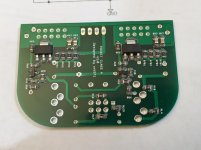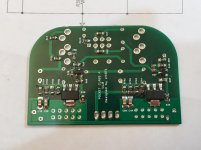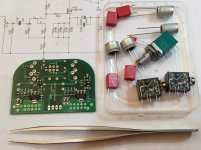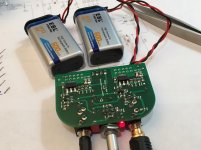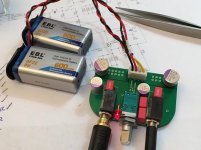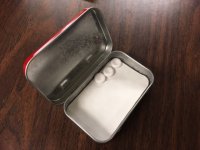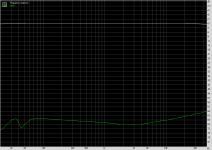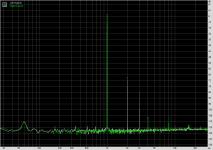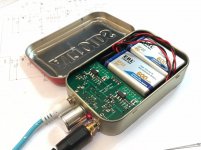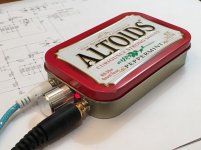Pocket Class A Headamp PCB Sounds Great!
This is a nice board, really easy to build. I could have soldered it by hand but thought I would give syringe applied reflow solder paste a try. Here is the board with solder paste and parts place on the blobs of paste. I am using Kester EP623.
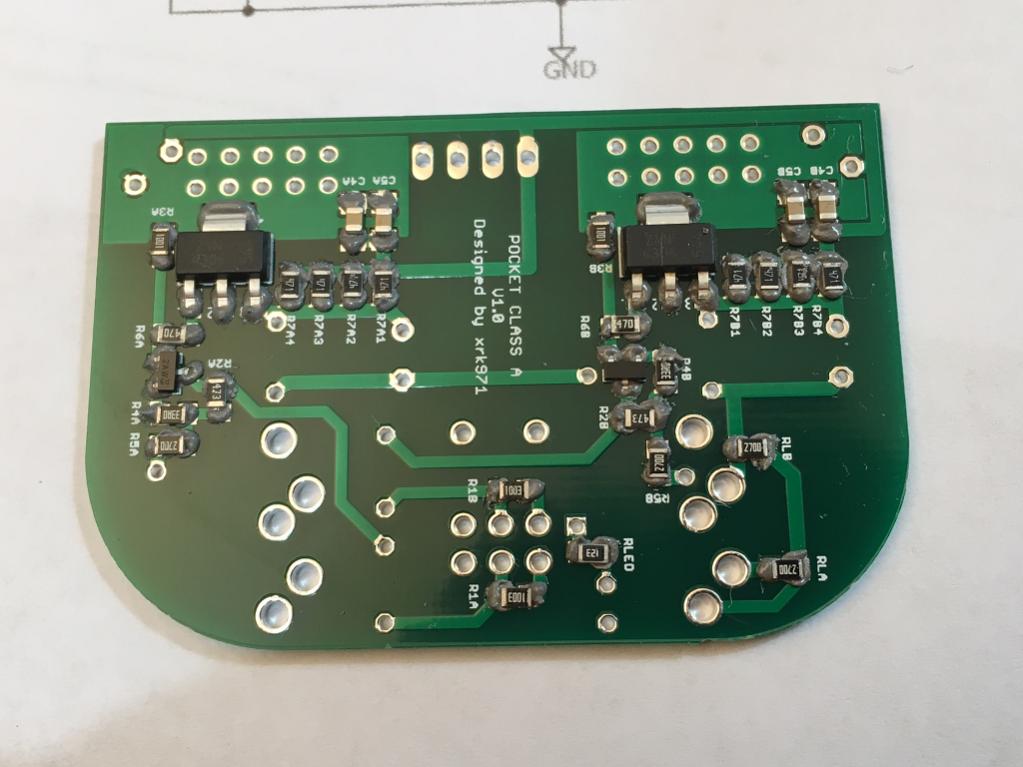
Here is the board after cooking it on a hot plate (set at medium) for bout 90 seconds (long enough for dull gray paste to turn liquid and shiny silver). That was so much faster than hand soldering!
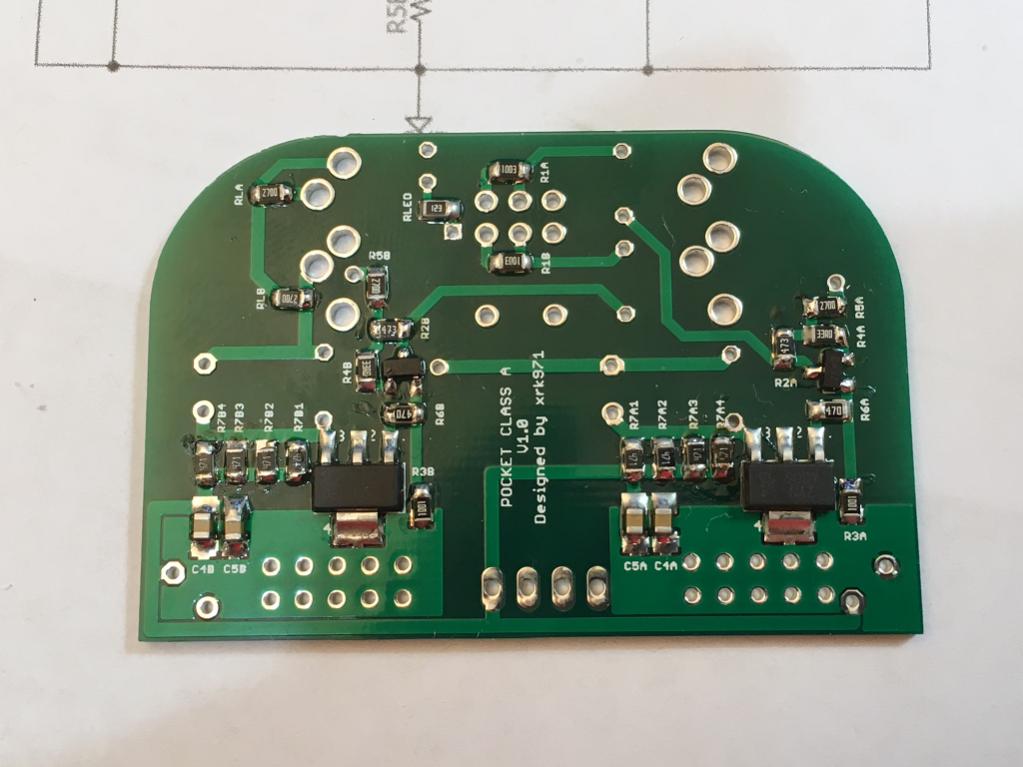
Here are all the through hole parts kitted up and ready to go - real big stuff:
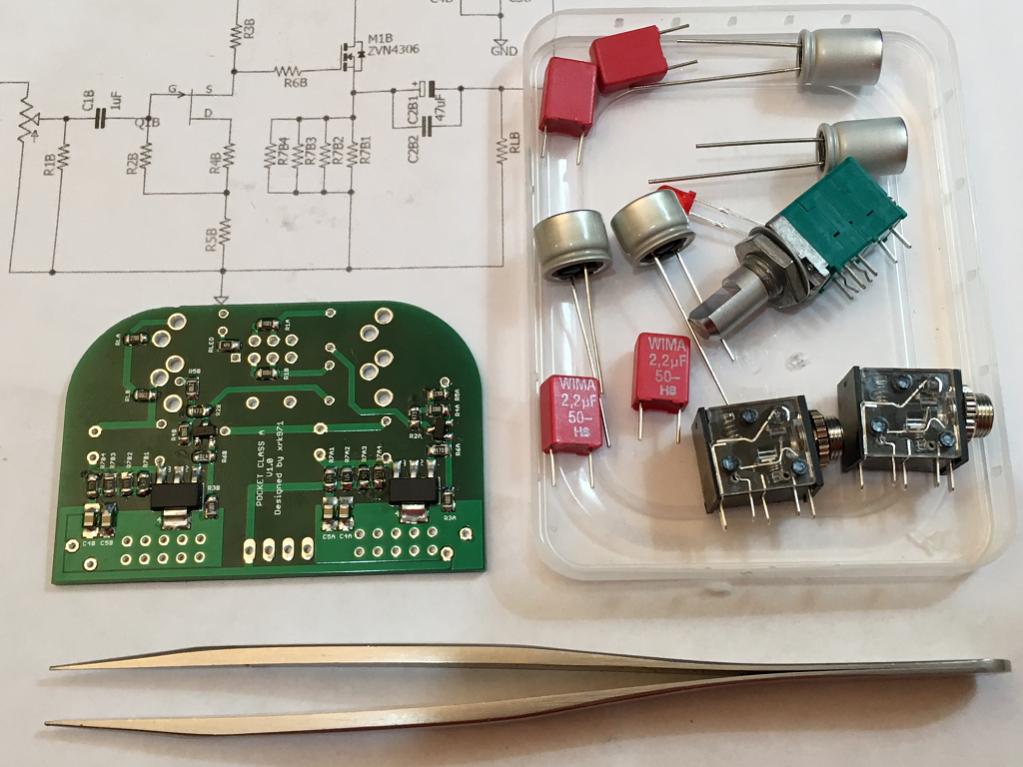
I was able to build and have sound out in 2hrs flat. It would slower with manual soldering but maybe 1 more hour. The planets were all aligned and the gods must have smiled upon me because it fired up the first time. Bias current through the four parallel resistors was 50mA (6v over 118R) exactly - a perfect setting. The DC voltage coming out of the MOSFET source pin was about 9v - a good value. There are things we can do if the bias is too high (like 65mA ot above):
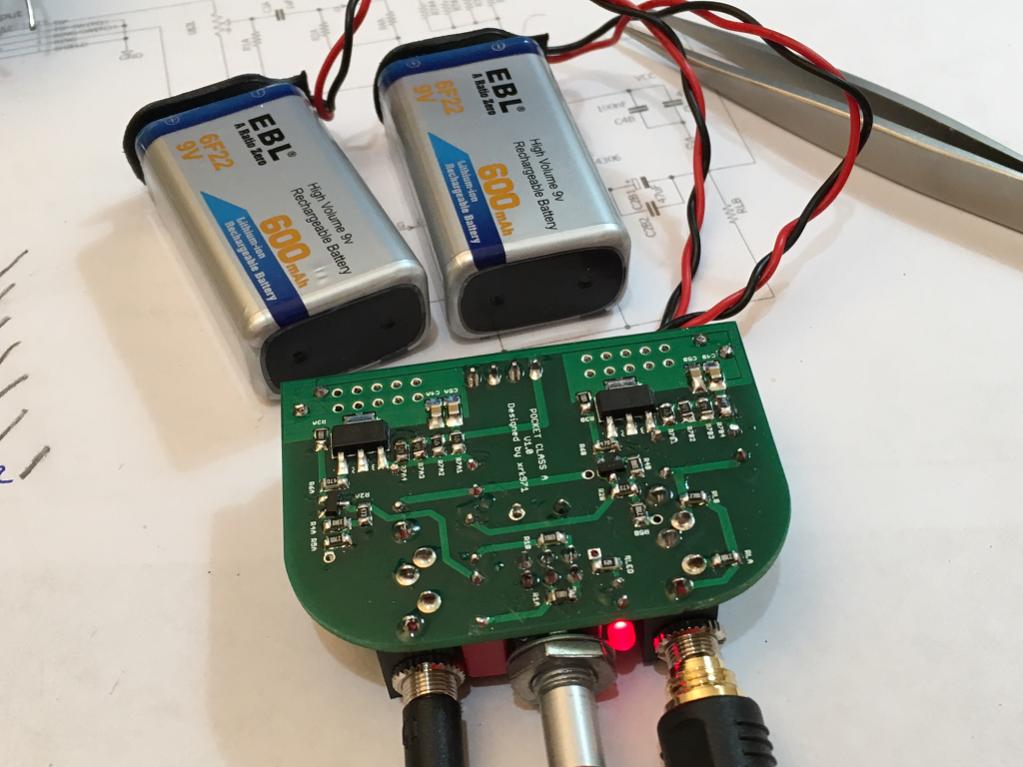
Here is the through hole side (which will be hidden from view when the board is in the tin:
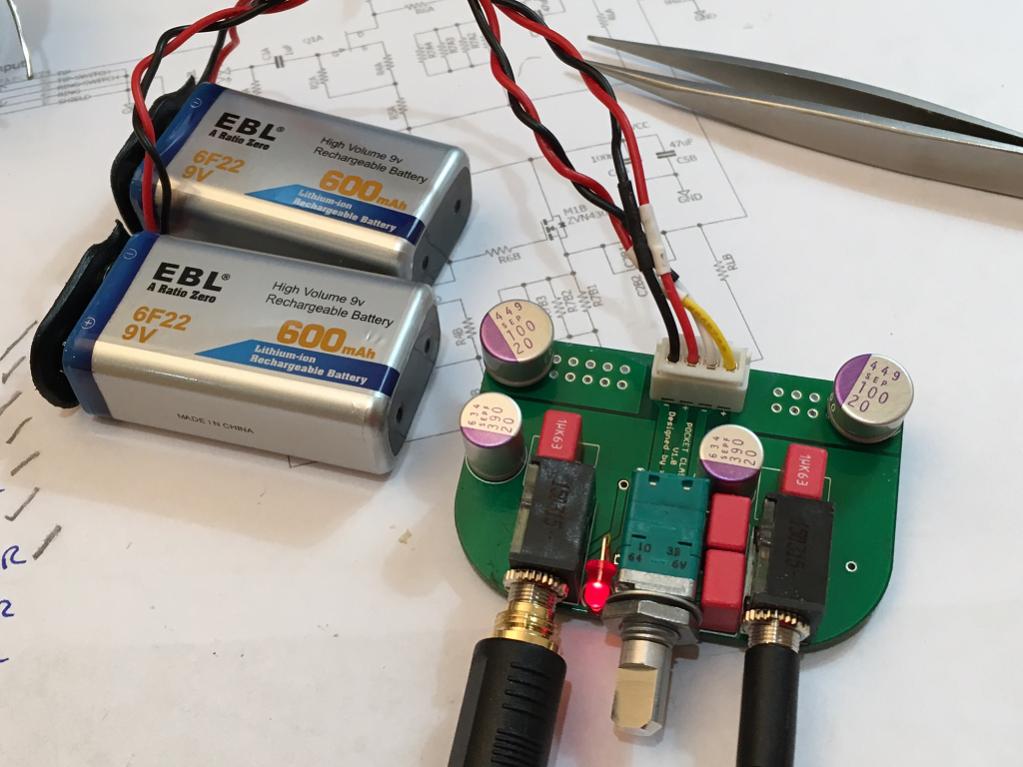
I am listening to it now as I type. Fantastic! Stunning sound actually. The 390uF output cap really delivers the bass and the 1uF WIMA bypass cap really gives some nice resolution in the details.
This confirms that the schematic, the layout by BDHM, the PCB, and the BOM, are all good to go. I will start preparing boards for shipment over next few days.

This is a nice board, really easy to build. I could have soldered it by hand but thought I would give syringe applied reflow solder paste a try. Here is the board with solder paste and parts place on the blobs of paste. I am using Kester EP623.

Here is the board after cooking it on a hot plate (set at medium) for bout 90 seconds (long enough for dull gray paste to turn liquid and shiny silver). That was so much faster than hand soldering!

Here are all the through hole parts kitted up and ready to go - real big stuff:

I was able to build and have sound out in 2hrs flat. It would slower with manual soldering but maybe 1 more hour. The planets were all aligned and the gods must have smiled upon me because it fired up the first time. Bias current through the four parallel resistors was 50mA (6v over 118R) exactly - a perfect setting. The DC voltage coming out of the MOSFET source pin was about 9v - a good value. There are things we can do if the bias is too high (like 65mA ot above):

Here is the through hole side (which will be hidden from view when the board is in the tin:

I am listening to it now as I type. Fantastic! Stunning sound actually. The 390uF output cap really delivers the bass and the 1uF WIMA bypass cap really gives some nice resolution in the details.
This confirms that the schematic, the layout by BDHM, the PCB, and the BOM, are all good to go. I will start preparing boards for shipment over next few days.

Attachments
Last edited:
I'm pretty sure this is the pot on Mouser.
http://www.mouser.com/Search/Produc...5virtualkey68800000virtualkey688-RK0971221Z05
http://www.mouser.com/Search/Produc...5virtualkey68800000virtualkey688-RK0971221Z05
Measurements of GB test amp #1
So depending on the Idss and Vgs of your particular BF862's, you may want to adjust R4 up or down a bit to get the bias current closer to what you want. I changed the value of R4 from the nominal 33R to 47R and it provides a 55mA bias current, up from 50mA. The overall sound is just much more engaging. You can adjust to taste but don't go too far off the typical values of 33R, 47R, 51R, 68R, 100R.
Here is the measured HD spectrum at 1kHz and driving 700mV int 270R load - you can see the noise flor is about -123dB, the 60Hz bump is EMI pickup since it is not in a case - all battery operation including laptop and sound interface, indicated THD was 0.053% and IMD is 0.049%:
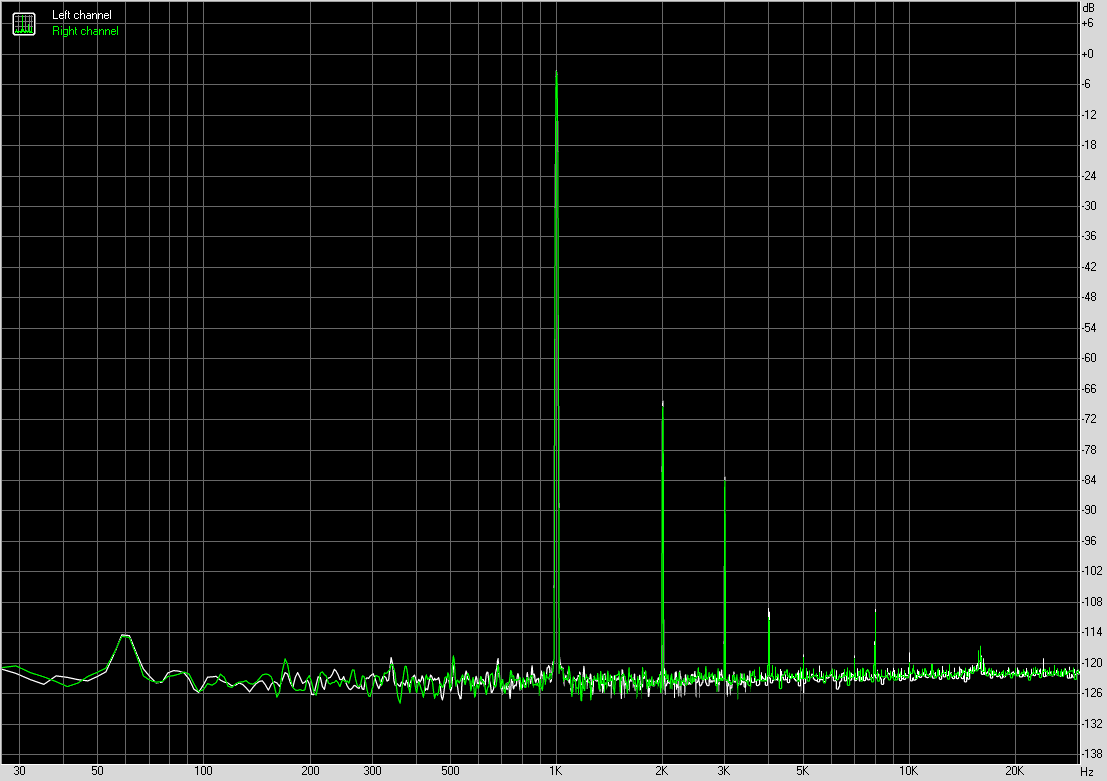
Here is the measured frequency response and THD vs frequency - this confirms why the bass response is so powerful:
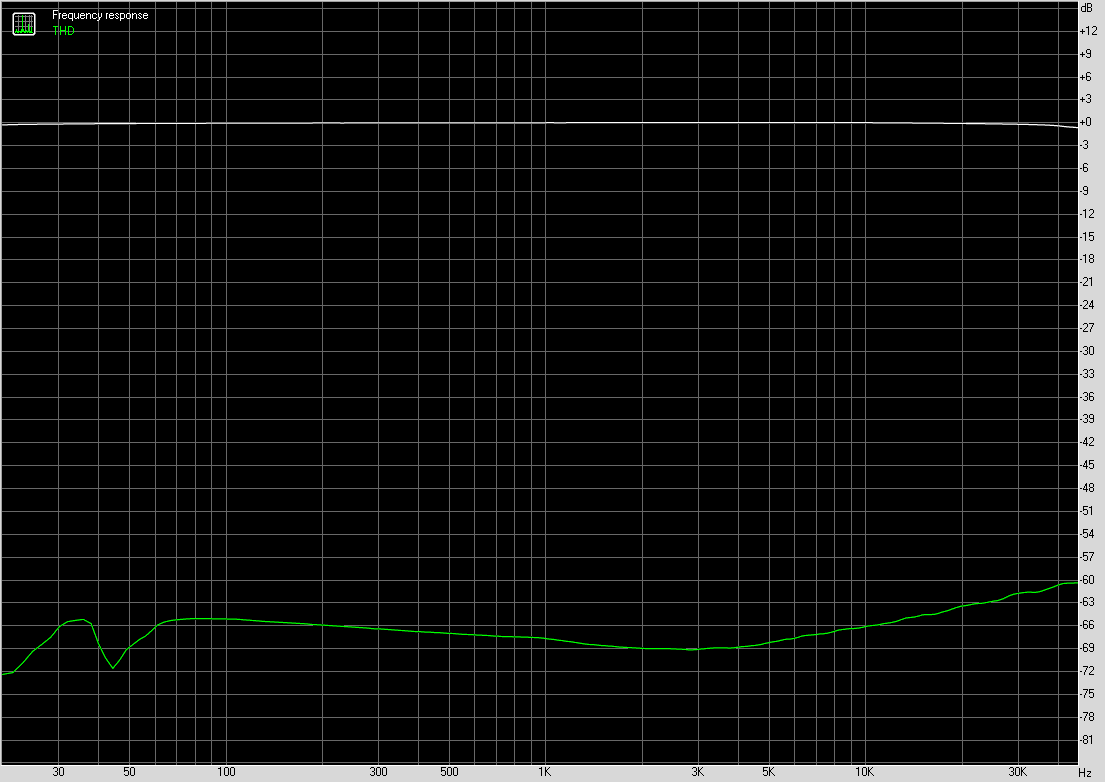
Attached is also a sound clip using the same reference as the Headamp comparo thread. Change the .asc extension to .mp3 to listen.
So depending on the Idss and Vgs of your particular BF862's, you may want to adjust R4 up or down a bit to get the bias current closer to what you want. I changed the value of R4 from the nominal 33R to 47R and it provides a 55mA bias current, up from 50mA. The overall sound is just much more engaging. You can adjust to taste but don't go too far off the typical values of 33R, 47R, 51R, 68R, 100R.
Here is the measured HD spectrum at 1kHz and driving 700mV int 270R load - you can see the noise flor is about -123dB, the 60Hz bump is EMI pickup since it is not in a case - all battery operation including laptop and sound interface, indicated THD was 0.053% and IMD is 0.049%:

Here is the measured frequency response and THD vs frequency - this confirms why the bass response is so powerful:

Attached is also a sound clip using the same reference as the Headamp comparo thread. Change the .asc extension to .mp3 to listen.
Attachments
Last edited:
Glad you like it. It's a superb sounding amp - I mean regardless of its size. As a preamp on a power amp, it works very nicely too.
This confirms that the schematic, the layout by BDHM, the PCB, and the BOM, are all good to go. I will start preparing boards for shipment over next few days.

Eeeeexcellent! 😀😀😀
Here is the Pocket Class A amp inside a tin. It truly is the only pocketable SE Class A headamp out there.

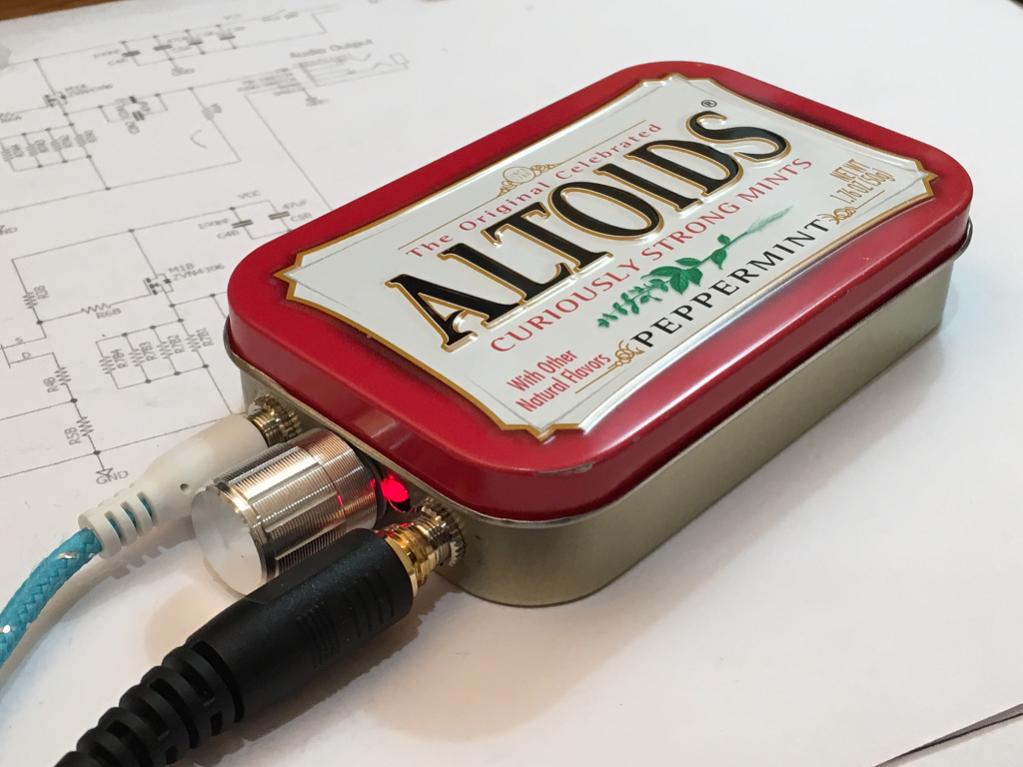
Very nice X, take a bow.
Now in place of "Curiously Strong Mints" maybe the slogan should be "Curiously Good Sound" ? 😀
Last edited:
I was really blown away by how good Bruce Springsteen can sound on this amp.
It sounds nice indeed but on an Intel NUC's headphone output and Sennheiser HD 600s when playing your file on Foobar2000 V1.3.14 vs playing a 44k FLAC "Streets Of Philadelphia" from "The Essential Bruce Springsteen" 2003 compilation album there are very noticeable differences in the bass reach and quantity as well as in the image focus and reverberation. From which album your master comes from so I could find it and convert it to .mp3 for trying to understand better the MP3 reference?
Hi Salas,
Thanks for checking out this thread. The source was from this album:
Greatest Hits (1995) » Bruce Springsteen
(1995 with photo of his back with guitar hanging on it)
Thanks for checking out this thread. The source was from this album:
Greatest Hits (1995) » Bruce Springsteen
(1995 with photo of his back with guitar hanging on it)
Very nice X, take a bow.
Now in place of "Curiously Strong Mints" maybe the slogan should be "Curiously Good Sound" ? 😀
Thanks, Zman01! I like that tag line "Curioulsy Good Sound" ! 🙂
Eeeeexcellent! 😀😀😀
Thank you for a beautiful work of art on the layout!
Hi Salas,
Thanks for checking out this thread. The source was from this album:
Greatest Hits (1995) » Bruce Springsteen
(1995 with photo of his back with guitar hanging on it)
My source is only 128kbit mp3 - hence probably why you may heaar distortions. Here is the relevant section of the source (trimmed in Audacity from original mp3 ripped from my CD).
Attachments
I heard a noticeably more "homogenized" overall sound in MP3 vs FLAC.
Now that you provided the REF MP3 I just hear a bit more "spectral" presence in voice and in synth with generally softer edges when listening to Pocket amp's looped MP3. Its only little of the many times sought after 2ndH SE "magic". Reminds of tubes.
Now that you provided the REF MP3 I just hear a bit more "spectral" presence in voice and in synth with generally softer edges when listening to Pocket amp's looped MP3. Its only little of the many times sought after 2ndH SE "magic". Reminds of tubes.
Hi, I am the usual late guy who just stumled over this GB. 🙂
I would like to ask politely if there happen to be any boards left?
I would be interested in one. Cmoys headphone amps are actually what got me into diyaudio and this seems a very nice development over cmoys for portable audio...
Thank you
Florian
I would like to ask politely if there happen to be any boards left?
I would be interested in one. Cmoys headphone amps are actually what got me into diyaudio and this seems a very nice development over cmoys for portable audio...
Thank you
Florian
- Home
- Group Buys
- xrk971 Pocket Class A Headamp GB
